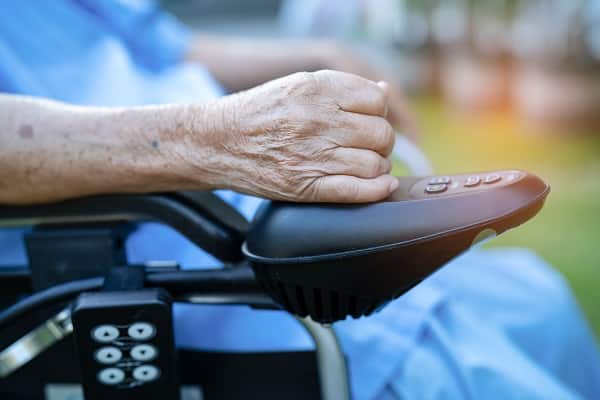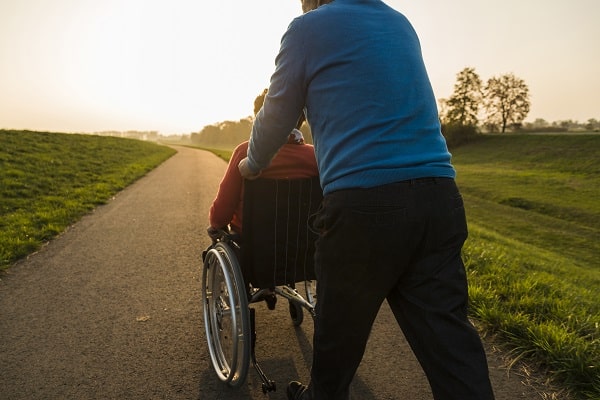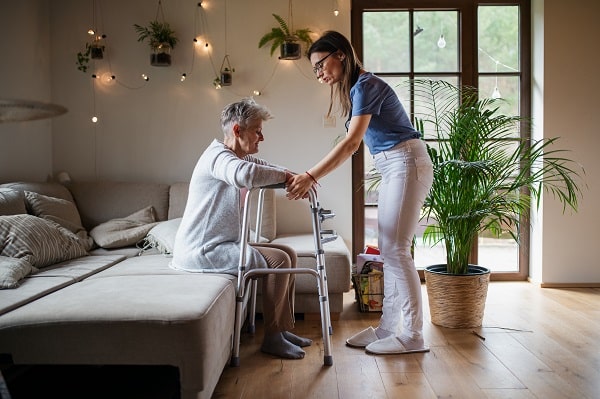Dementia is estimated to affect up to 47, 000 Australians and 55 million people globally. It’s not an illness in itself, but a set of symptoms caused by conditions like Alzheimer’s, Parkinson’s or other vascular diseases. It impacts a person’s memory, thinking, mobility, and many other areas of their life.
September is World Alzheimer’s Month, with Australia’s Dementia Action Week happening 19 – 25 September. This year, the theme ‘Know Dementia, Know Alzheimer’s‘ will continue the focus on helping people understand the disease after they’ve been diagnosed.
As such, we’d like to help you understand dementia as it relates to mobility. You may be someone who’s recently been diagnosed, or a carer or family member to a diagnosed loved one. Or, you may suspect you or someone you care about is experiencing dementia.
Whatever your situation, in the below article we explain the impact of dementia on mobility.

The statistics
Before we look at dementia and mobility let’s understand the impact of this disease. As human life expectancy goes up around the globe, conditions that affect the elderly are becoming increasingly pressing issues.
Dementia is now the third-leading cause of disease burden in Australia, and more than half of people in residential aged care suffer from it. It’s estimated that between 134,900 and 337,200 Australians provide consistent unpaid care for a person with dementia.
Further, the number of Australians with dementia is projected to more than double by the year 2058.
It’s therefore important to educate not only those living with the disease, but the communities they live in. We should all have a greater understanding of how to achieve better care and management.

Dementia and mobility – early stages
Dementia is a disease that typically develops after the age of 65… which coincidentally coincides with the NDIS age limit for new participants. Read our article on the over 65 NDIS cut off for more information on this then our article on home care packages.
Around 2 in every 100 people aged between 65 and 69 will have it, and that risk roughly doubles every five years. Developing the illness earlier than 65 years old is called early-onset dementia and is less common – occurring amongst only 5% to 6% of dementia patients.
With the disease appearing later in late, it often coincides with people losing mobility due to ageing. However, dementia is not a natural part of ageing and it accelerates loss of mobility by impacting coordination and balance.
In the early and mid-stages, you may be able to walk unassisted, but feel less steady on your feet. You may also find yourself tripping and falling more often. Nevertheless, it’s important to stay mobile as much as you can.
Why? Because exercise has been proven to improve mood, and keep your muscles, joints, and heart in good shape. It will also help you stay at a healthy weight and have regular toileting and sleeping habits. All these things are particularly important for those living with dementia.

Staying mobile
While you want to have some level of exercise in your day, the increased risk of falling and injury needs to be taken into account. Here are a few tips to reduce the risks:
Install handrails
If you haven’t already, consider installing or getting someone to install handrails in your home.
Consider a walking aid
A cane, crutch or walker will help steady you when you’re moving around. Check out the different types here.

Increase visibility
Simplify your household to keep the items you need within easy reach and everything else out of the way. Put night lights between the bedroom and the bathroom to prevent late-night falls. Carry things hands-free by using a backpack, fanny pack, or an apron with pockets. Many walkers also come with attached pouches.
Remove hazards
Ensure the floor is always clear of clutter, electrical cords or food spills. Arrange furniture so you have clear, sufficiently wide pathways between rooms. Keep stairs clear of packages, boxes, or clutter.
Add grip
In the bathroom, use nonslip bath mats, grab bars, a raised toilet seat, and a shower tub seat. Purchase rug tape to keep rugs flat on the floor. If necessary, add treads to stairs to prevent slipping.
Footwear
Invest in footwear with better grip. If you wear slippers inside your home, there are plenty of options with non-slip rubber soles.
Therapy dog
Did you know there are therapy dogs specifically trained to help those suffering from dementia and Alzheimer’s? They’re excellent at helping people deal with the anxiety, aggression, depression, and loneliness that often accompanies the disease.
Therapy dogs are specifically trained and selected for their calm, dependable, quiet nature, being non-threatening and friendly. They gently encourage dementia patients to be more interactive, providing them with a companion to talk to, and will give them a reason to exercise too.

Our article on creating an accessible home explains a ton of useful ways to make your home a safer space for people living with dementia and other disabilites. It’s definitely worth a read.
Mobility in the late stages
Carers and family should take note that dementia – and the medication the patient may be on – will have a major impact on mobility in the disease’s advanced stages.
They may lose their ability to walk, stand, or get out of bed, and will need round-the-clock care either by a carer or family member, or in residential aged care. Below are some mobility assistance options for those with advanced dementia:
A manual wheelchair
Wheelchairs are for people who can no longer walk and/or put prolonged pressure on their legs. Manual wheelchairs are propelled by the user or pushed by someone else. Specialised wheelchairs may also allow the user to stand supported in an almost upright position.
You may want to read up on these considerations when choosing a wheelchair to make your decision.
Electric wheelchairs and mobility scooters generally aren’t safe – and can even be dangerous – for those living with advanced dementia. The patient may have trouble learning how to use it, and may knock into objects or people.

Dementia service dog
Service dogs are different from therapy dogs in that they’re trained to perform specific tasks important for those suffering from advanced dementia. This would include:
- Getting their owner home when a command is given
- Preventing their owner from leaving the house unaccompanied
- Assisting with daily tasks, such as waking their owner up in the morning, reminding them where their clothes are, and bringing medications in bite-proof packaging
- Physical and emotional support
Wandering
Some people living with dementia (especially early onset dementia) may have drastically decreased cognitive abilities, but may still be able to walk on their own.
Wandering is very common for those with dementia – around 6 in 10 will wander at least once, and many repeatedly. If unsupervised, they may be able to get quite far away from their home before they realise they don’t know where they are and can’t find their way back.
This piece on Alzheimer’s and wandering provides very useful advice on how to decrease, prevent, or locate someone who’s wandering.

Insurance for specific needs
Blue Badge Insurance is Australia’s first disability and independence insurance specialist, having been established many years ago to positively discriminate for people with disability.
We offer insurance cover for disability converted cars and mobility equipment, like wheelchair insurance, as well as pet insurance for companion animals and assistance dogs. It’s all about protecting the things that keep those living with dementia as independent for as long as possible.








